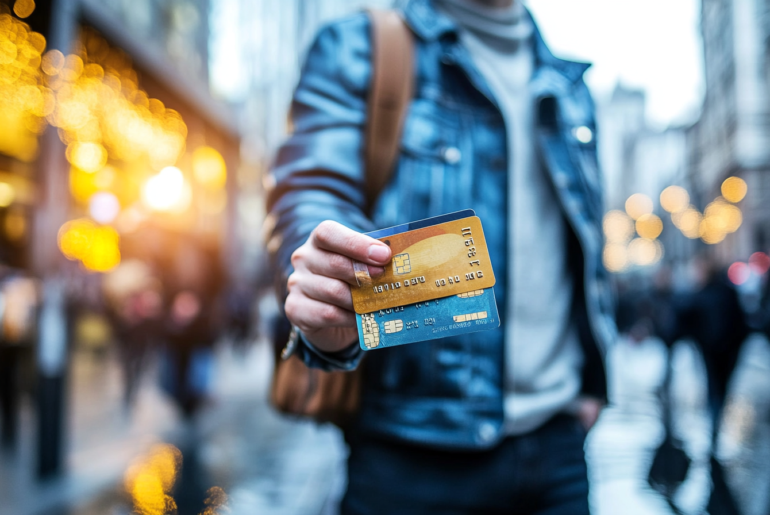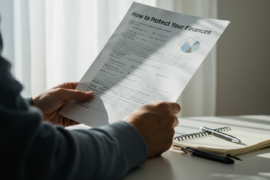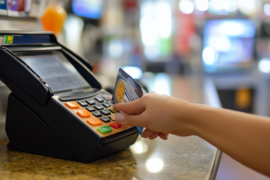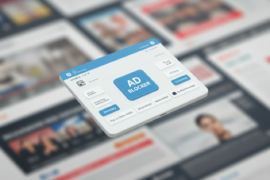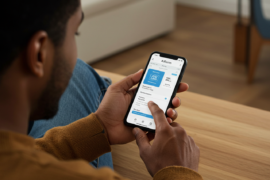This article may contain references to products or services from one or more of our advertisers or partners. We may receive compensation when you click on links to those products or services. Nonetheless, our opinions are our own.
- Key Highlights
- Introduction
- Understanding Credit Cards for Teens
- Preparing Teens for Financial Responsibility
- The Beginner’s Guide to Getting a Credit Card at 16
- Building a Good Credit Score as a Teen
- Tips for Maintaining a Healthy Credit Score
- Conclusion
- Frequently Asked Questions
- Recommended Reads
Key Highlights
- Teenagers under 18 cannot get their own credit cards, but they can be authorized users on an adult’s account.
- Being an authorized user helps teens build their credit history, which is key to achieving financial independence in the future.
- Parents and guardians should show teens how to use credit cards wisely. They need to learn about budgeting and managing debt.
- Secured and student credit cards are designed for people with limited credit history. These are good options for teens when they turn 18.
- Building good credit early makes it easier to get loans, rent apartments, and find jobs later.
Introduction
Many people use credit cards, so teaching teens about good money habits early is essential. Knowing how to use a credit card responsibly is a key life lesson. Even though teens can’t get their credit cards until adulthood, they can still learn about credit and build a good credit history. This guide will help you understand everything about credit cards for 16-year-olds.
Understanding Credit Cards for Teens
Although 16-year-olds cannot have their own credit card account, they can still build credit by becoming authorized users on a parent’s or guardian’s account. This means the teenager will receive a card linked to that account, and their spending will be reported to the credit bureaus.
Getting early credit experience can be helpful later in life. It allows teens to create a good credit history, which is essential for securing better interest rates on loans, renting an apartment, and even getting some jobs in the future.
The Basics of Credit for Young Individuals
Credit bureaus collect information on how people borrow and repay money. They compile this data into a credit report, which lenders use to determine if someone is trustworthy with credit. A credit score is a numerical representation of this report and indicates credit risk. A higher score means a better credit standing.
Teens can improve their credit by making on-time payments and using credit responsibly. Even small actions, like paying a utility bill or a cell phone contract, can help create a good credit history.
If a teenager is an authorized user of another person’s account, their spending and payments will be reflected on their credit report. This helps them build credit when they eventually apply for their credit card or loan.
Legal Requirements for Teen Credit Card Ownership
The Credit Card Accountability Responsibility and Disclosure (CARD) Act of 2009 makes it difficult for individuals under 21 to get a credit card. This law requires anyone under 21 to show proof of independent income. If they cannot, they need a cosigner over 21 who will be responsible for the debt.
These rules help young adults avoid excessive credit card debt, which is why a 16-year-old cannot have a credit card in their name. However, they can still build credit as an authorized user on a parent’s or guardian’s account.
Preparing Teens for Financial Responsibility
Teaching teens money management skills is crucial. Giving them a credit card is not enough—they must learn to use it wisely. This will help them manage their finances responsibly in the future.
Start by discussing budgeting and the risks of debt. Consider opening a bank account for your teen so they can practice managing their money and tracking their spending.
Teaching Financial Literacy to Teens
Teenagers should learn essential financial skills, including budgeting, saving, and smart spending. Having a checking account with a debit card can help them manage their money better.
Encourage teens to track their spending and differentiate between needs and wants. Opening a savings account and setting financial goals, such as saving for a car or college, can instill good money habits.
Giving them control over their money early on teaches them essential skills for the future. These financial literacy lessons will prepare them for responsible credit card use.
The Role of Parents in Managing Credit
Parents play a crucial role in teaching their teens about credit. Start with open conversations about credit card use, interest rates, and responsible spending.
Set spending limits and regularly review credit card statements together. This will allow for discussions on smart spending habits and financial accountability, and your guidance will help teens develop a strong credit foundation.
The Beginner’s Guide to Getting a Credit Card at 16
At 16, options for obtaining a credit card are limited. Teens cannot apply for a regular credit card without a security deposit until they turn 18. However, they can begin building credit through alternative methods.
What You Need to Get Started
A teenager must be 18 to apply for a credit card. However, they can prepare by gathering the necessary documents:
- Social Security number – Required for credit card applications.
- Proof of income – Pay stubs, bank statements, or tax returns may be needed to show financial stability.
- Personal finance knowledge – Understanding credit, interest rates, fees, and responsible card use is essential.
Being an authorized user on a parent’s or guardian’s credit card is the best way for 16-year-olds to start building credit. They receive a card in their name linked to the primary account holder’s credit line. Their spending activity is reported to the credit bureaus, helping to establish a credit history.
Parents should choose a credit card with a reasonable interest rate and low fees. Clear rules should be established regarding spending limits and payment responsibilities.
Step 2: Exploring Student Credit Cards
Once a teen turns 18 and enters college, student credit cards become an option. These cards have lower credit limits and more straightforward qualification requirements than standard ones.
Under the CARD Act, individuals under 21 must show proof of income or have a cosigner to obtain a student credit card. Researching different student credit card options helps teens choose one that fits their spending habits and financial goals.
Step 3: Understanding Secured Credit Cards
Secured credit cards are a good choice for teens with no credit history. These cards require a security deposit, which typically determines the credit limit. Since there is minimal risk for the issuer, approval is more straightforward.
| Feature | Secured Credit Card | Traditional Credit Card |
|---|---|---|
| Security Deposit | Required | Not Required |
| Credit Limit | Matches deposit | Set by issuer |
| Credit Building | Helps establish a credit history | Builds credit history |
Using a secured credit card responsibly—making on-time payments and keeping balances low—can lead to eligibility for an unsecured credit card with better terms and rewards.
Building a Good Credit Score as a Teen
Starting early with good credit habits benefits a teen’s financial future. A strong credit score aids in loan approvals, securing rental agreements, and even job applications.
Teens should use credit cards wisely, spending only what they can afford to pay off in full each month. Keeping credit utilization low (under 30%) and making timely payments contribute to a good credit score. Building strong credit takes time, but responsible habits yield long-term rewards.
Tips for Maintaining a Healthy Credit Score
To maintain a good credit score, teens should follow these practices:
- Pay bills on time – Setting up automatic payments can prevent late fees.
- Keep credit utilization low – Spending should be well below the credit limit.
- Monitor credit reports regularly – Reviewing reports helps identify errors or potential fraud.
Practicing these habits ensures a stable financial future and protects credit health.
Conclusion
Getting a credit card at 16 is possible by becoming an authorized user on a parent’s account. Teens can prepare for financial independence by learning credit basics, understanding legal requirements, and building a solid credit history. Starting early sets the foundation for sound financial habits, leading to better opportunities in adulthood.
Frequently Asked Questions
Can a 16-year-old legally own a credit card in the U.S.?
No, but they can be added as an authorized user on an adult’s credit card account.
What are the benefits of getting a credit card at 16?
Building credit history early helps teens secure loans, lower interest rates, and develop responsible financial habits.
How can a teen build credit responsibly?
Using credit for small purchases, making timely payments, and keeping balances low helps establish a strong credit history.

Reviewed and edited by Albert Fang.
See a typo or want to suggest an edit/revision to the content? Use the comment form below for feedback.
At FangWallet, we value editorial integrity and open collaboration in curating quality content for readers to enjoy. Much appreciated for the assist.
Did you like our article and find it insightful? We encourage sharing the article link with family and friends to benefit as well - better yet, sharing on social media. Thank you for the support! 🍉
Article Title: Credit Cards for 16-Year-Olds: Can Teens Get One and How?
https://fangwallet.com/2025/03/17/credit-cards-for-16-year-olds/The FangWallet Promise
FangWallet is an editorially independent resource - founded on breaking down challenging financial concepts for anyone to understand since 2014. While we adhere to editorial integrity, note that this post may contain references to products from our partners.
The FangWallet promise is always to have your best interest in mind and be transparent and honest about the financial picture.
Become an Insider
Editorial Disclaimer: The editorial content on this page is not provided by any of the companies mentioned. The opinions expressed here are the author's alone.
The content of this website is for informational purposes only and does not represent investment advice, or an offer or solicitation to buy or sell any security, investment, or product. Investors are encouraged to do their own due diligence, and, if necessary, consult professional advising before making any investment decisions. Investing involves a high degree of risk, and financial losses may occur including the potential loss of principal.
Source Citation References:
+ Inspo
There are no additional citations or references to note for this article at this time.
